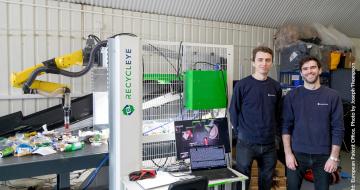
What is a patent?
A patent is an exclusive and temporary exploitation right for an invention, which is granted by the government in exchange for the disclosure of the invention. To obtain a patent, the invention must meet a certain number of strict conditions; in particular, it must be novel, have an inventive step, be lawful and have industrial applicability. These requirements are cumulative and are verified before patent issuance by the institution which issues the patents.
The patent can apply to a product, a result or a process. This means that a new product, material or tool, as well as a method used to obtain them or to achieve a certain result may be subject to a patent.
For a certain period of time, a patent holder has the right to forbid third parties to use or copy the invention, unless this use or this copy falls under the scope of a patent right exception.
Here are several examples of inventions which have been patented: the sewing machine, the radio wave generator, the incandescent lamp, the telephone, the typewriter, the gramophone, a more economical method for producing aluminium.
Almost all modern high-tech products such as DVDs, mobile phones, flat-screen TVs and USB keys entail dozens of patented inventions.
One of the goals of patenting is to encourage innovation and the dissemination of knowledge. The government therefore rewards inventive ability by granting a temporary monopoly right on the invention. However, the patent is made public and the invention must be clearly described in the patent request in order to be granted protection. This is done in the hope of discouraging inventors from keeping their innovative inventions a secret.
Thus, patents are an invaluable source of technological information. By contacting the patent information service , businesses can receive up-to-date information on research carried out by their competitors and thus avoid carrying out the same research themselves.
Why should I file a patent application?
A patent gives its holder exclusive exploitation rights for an invention. If the patent holder does not wish to exploit the invention himself or only wishes to do so in a specific field, he can sign licensing agreements which provide additional revenue for his company. For companies, patents are more useful as part of a value-creating strategy than as a guarantee of exclusive exploitation rights.
A patent can also reinforce a company’s negotiation stance during collaboration projects with other partners. For example, a patent on an improvement to a previously patented invention increases the chance of obtaining a license for this prior invention through cross-licensing.
Patenting one’s own inventions can also be a strategy to encourage collaboration in the field of research with other companies or to transform one’s technology into an industry-wide standard.
Patents held by third parties can be an obstacle to a company’s development in a particular field. By being the first to patent an invention, a company can be sure that no one else will use this invention.
Finally, patents are also an excellent form of promotion. It tells others in which technical field you operate and in what ways you are more technologically advanced than your competitors.
How can I protect my invention?
Patenting your inventions can be advantageous from an economic, strategic, industrial or competitive point of view.
Please note! Secret can also seem like a useful strategy for protecting your inventions. However, there are some drawbacks to this method and it is important to weigh the advantages and disadvantages carefully.
In any case, keeping an invention secret is essential in the pre-patenting phase. An invention must be truly novel in order to obtain patent protection and this novelty may be threatened in case of disclosure of the invention. It is therefore essential to keep an invention a secret, at least until the patent application has been filed! To maintain this secrecy, we recommend that you include well-written confidentiality agreements when communicating with any potential commercial or industrial partners and that you restrict access to all company sites where inventions are under development.
Patent protection is not automatic, contrary to copyrights. A patent must be requested. To obtain this protection, you may choose between a Belgian patent, if you only want to protect your invention on Belgian territory, a European patent, if you are looking for protection in multiple European countries, or an international patent request, if you want to protect your invention outside of Europe as well. There are distinct procedures to follow (involving different costs as well) for each level of patent protection.
More information
-
Who is the owner of the patent right? What are my rights as an employer or employee in relation to the invention developed in the company?
-
Who can apply for a patent? Can I be represented?
-
How do I indicate the name and legal form of the persons I am referring to?
Circular of 02/12/2019 on the indication of the name of a natural or legal person (French version (PDF, 641.41 KB) - German version (PDF, 643.41 KB)) -
How do I apply for a patent? Should I opt for a Belgian, European or international patent application?
-
Are there any exceptions to my exclusive rights? What are they? Can the use of the invention in the private sphere also be prohibited? Or for scientific research?
-
Can I still refuse to grant a licence for use? Are there cases in which such a licence is compulsory?
-
How can I enforce my rights? What can I do if the patent is infringed?
-
How do I know if an invention is protected? Where can I find patent information?
-
What is a supplementary protection certificate for medicines or plant protection products?
-
Are biotechnological inventions patentable?
-
What subsidies are available to help a company patent its inventions?


